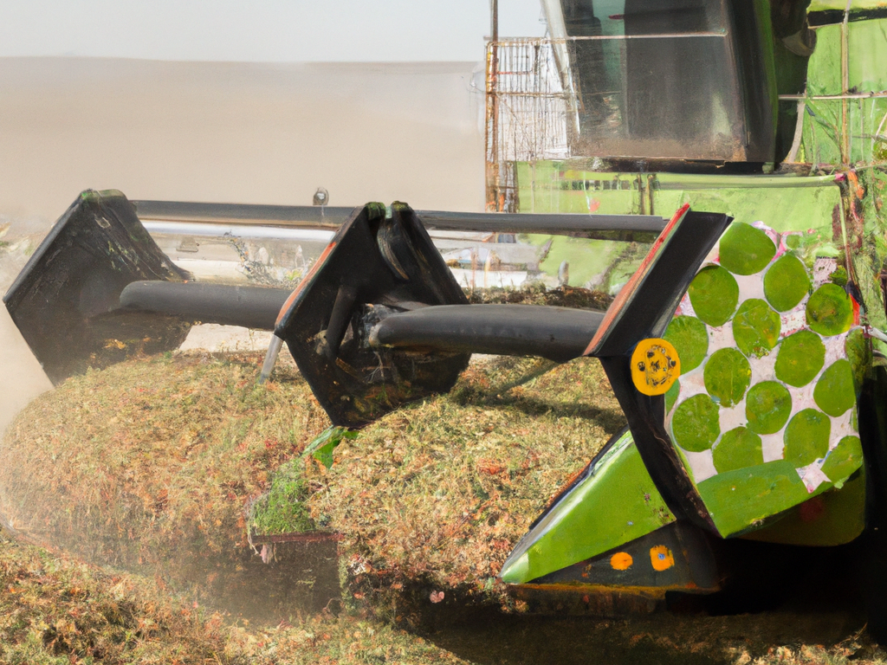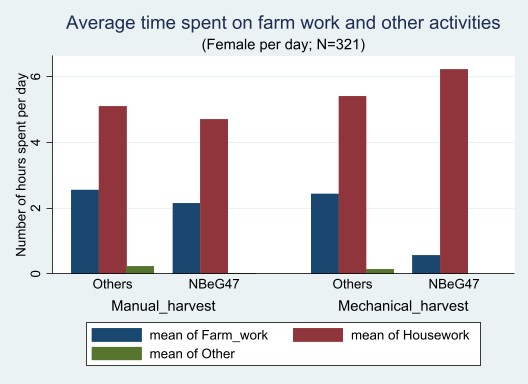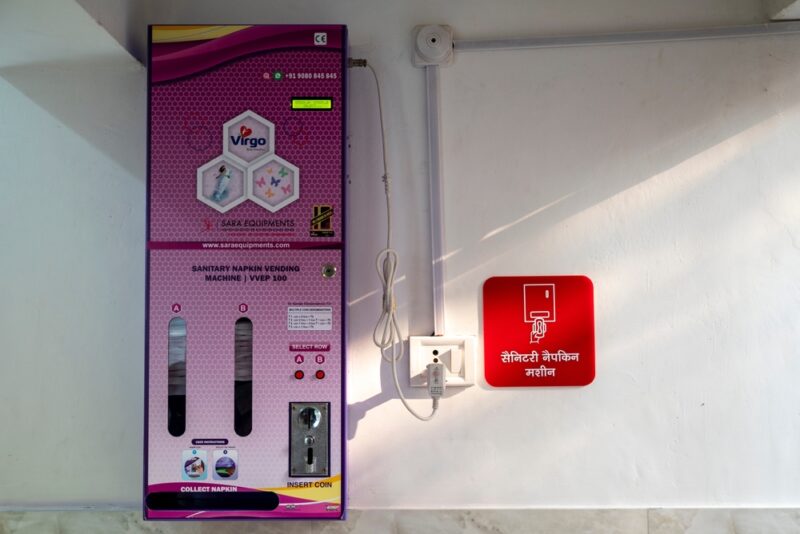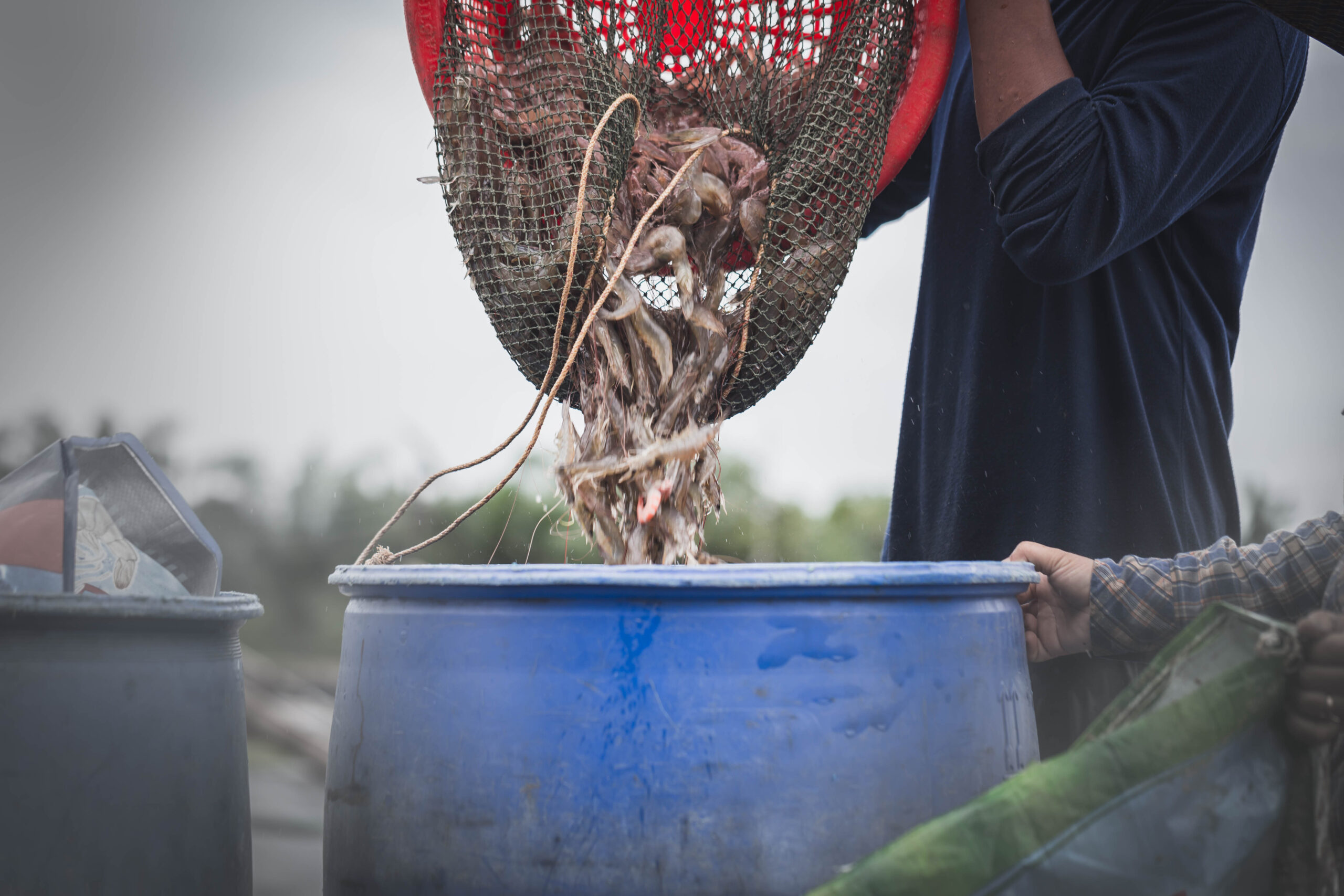More Chickpeas with Less Labor? Assessing the Impact of Machine-Harvestable Chickpeas on Female Labor

As India’s population increases and demand for food rises along with it, farm laborers—women in particular—face increased burdens and drudgery. Enter NBeG47, a machine-harvestable chickpea variety introduced by the International Crops Research Institute for the Semi-Arid Tropics (ICRISAT) to reduce the hours women spend on the chickpea harvest while maintaining a protein-rich food supply.
In the summer of 2022, as a TCI intern, I dug into ICRISAT data to see what factors influence the probability that households will adopt the machine-harvestable chickpeas and the ability of the new variety to reduce women’s working time on the farm. My analysis shows that machine-harvestable chickpeas have the potential to release female labor from on-farm drudgery, but to realize this purpose, we need to integrate innovations from multiple fields, such as policy and legislation, culture and social economy, technology and service extensions, etc., along with the release of the new variety.
A growing population and tight labor supply put the squeeze on Indian women
Because of its increasing population, India faces challenges in maintaining its nutrition supply. Some states have also experienced labor shortages in the agriculture sector, especially with regard to female labor. Under these circumstances, female laborers experience increased burdens from farm work while they are also responsible for unpaid household labor. ICRISAT, working with the Regional Agricultural Research Station at Nandyal, Andhra Pradesh, released the first machine-harvestable chickpea variety to cope with these issues.
The seeds of machine-harvestable chickpeas were released to selected households in the Kurnool and Prakasam districts of Andhra Pradesh in 2015. The households were selected randomly across the experiment districts, along with households planting traditional chickpeas. ICRISAT conducted two rounds of quantitative surveys in 2019 and 2021, while four separate focus group discussions were also conducted in the villages of Balapnur and Kanala to further assess the situation and farmers’ reactions to the machine-harvestable variety.
Machine-harvestable chickpeas are potentially helpful to reduce female labor working time on farms
 From the analysis, we observe that harvesting chickpeas mechanically will significantly reduce female working days per acre, but adopting the machine-harvestable chickpea variety without mechanization will significantly increase female working days per acre. The seemingly contradictory results correspond to the previous implication that growing the new chickpea variety may require more female labor inputs compared to traditional varieties. Adopting machine-harvestable chickpeas will only release female labor from over-drudgery on farms greatly when households use combined harvesters, which can potentially compensate for the extra female labor requirement of other operations.
From the analysis, we observe that harvesting chickpeas mechanically will significantly reduce female working days per acre, but adopting the machine-harvestable chickpea variety without mechanization will significantly increase female working days per acre. The seemingly contradictory results correspond to the previous implication that growing the new chickpea variety may require more female labor inputs compared to traditional varieties. Adopting machine-harvestable chickpeas will only release female labor from over-drudgery on farms greatly when households use combined harvesters, which can potentially compensate for the extra female labor requirement of other operations.
What factors influence the adoption of machine-harvestable chickpeas in rural India
Based on the survey results, around 70% of both machine-harvestable chickpea and traditional chickpea growers harvest chickpeas by hand, which makes it necessary to study the factors that influence this decision separately. After digging into the data on household demographics, production practices, and male-female labor characteristics, we identified three factors that have significant effects:
- Technical training
- Participation in agricultural organizations
- Female labor availability
Households that receive technical training and participate in agricultural organizations, such as primary agricultural cooperative societies (PACS) and farmers cooperative societies, are more likely to adopt machine-harvestable chickpeas and use combined harvesters for the harvest. However, an increase in female labor availability will encourage the adoption of machine-harvestable chickpeas while discouraging harvest mechanization. Without a labor shortage, these households prefer to maintain their current farming practices without the extra cost of mechanization. This implies that growing machine-harvestable chickpeas potentially requires more female labor inputs, and this increased labor may come from other agricultural operations besides harvesting.
According to the focus group results, market limitations such as lower demand, the market price of machine-harvestable chickpeas, and farmers’ unwillingness to mechanize their harvesting practices due to potential unemployment also affect households’ decision to adopt the new chickpea variety and mechanize their harvest.
With the necessary supports, machine-harvestable chickpeas can make a difference
Increasing nutrition demands and rural-urban migration patterns in India create a clear demand for agricultural technology that can help reduce labor requirements to compensate for shortages and maintain a stable supply of nutritious foods. The development of machine-harvestable chickpeas can potentially satisfy both needs. However, we need to recognize the potential spillover effects, such as temporarily reduced profits or unemployment during the transition to new agricultural practices. Regional agencies and community organizations should establish more frequent connections with smallholder farmers to provide the necessary training, access to information, and additional job opportunities to promote the adoption of machine-harvestable chickpeas. Making machinery affordable and accessible to smallholder farmers is also important to address the extra cost of harvesting using combined harvesters instead of labor. Policymakers should also adjust regional markets to increase their capacity to absorb new chickpea products to avoid a price disadvantage due to oversupply.
Combining policy adjustment and innovation from multiple fields can help mitigate negative spillover effects from the initial release of the new chickpea variety and ultimately facilitate optimal outcomes for community development.
Jialu Li is a second-year Master of Public Administration student, concentrating in sustainable agri-food system development and innovation. She was a TCI intern in the summer of 2022.
Featured image: Chickpeas are harvested by a combined harvester. ((AI-generated image by OpenAI))





